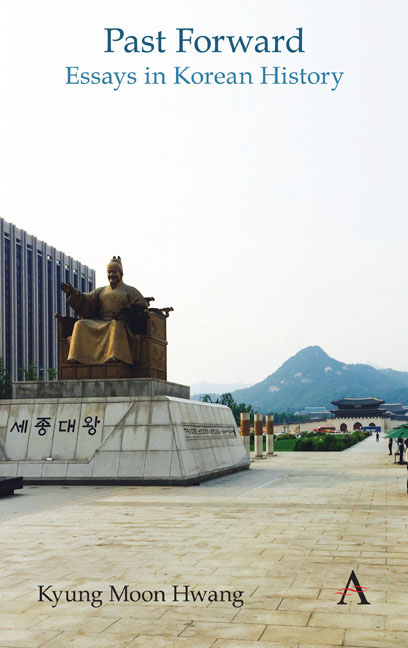Book contents
- Frontmatter
- Contents
- List of Figures
- Foreword
- Chronologies of Korean History
- Themes
- Acknowledgments
- Note on Romanization and Spelling
- Part I Circulating History
- 1 Recycling Names for Korea
- 2 Toppling Tyrants
- 3 Religion and Secularism
- 4 Commemorating the Comfort Women
- 5 May 16 and May 18
- 6 Tragedy and Farce
- 7 Generational Renewal
- Part II Durable Traditions
- Part III Ancient Remains
- Part IV Dynastic Depths
- Part V Modern Origins
- Part VI Challenges of Nationhood
- Part VII History Makers
- Part VIII External Presences
- Part IX Trials of Modernization
- Part X Gripped by the Past
- Index
3 - Religion and Secularism
from Part I - Circulating History
- Frontmatter
- Contents
- List of Figures
- Foreword
- Chronologies of Korean History
- Themes
- Acknowledgments
- Note on Romanization and Spelling
- Part I Circulating History
- 1 Recycling Names for Korea
- 2 Toppling Tyrants
- 3 Religion and Secularism
- 4 Commemorating the Comfort Women
- 5 May 16 and May 18
- 6 Tragedy and Farce
- 7 Generational Renewal
- Part II Durable Traditions
- Part III Ancient Remains
- Part IV Dynastic Depths
- Part V Modern Origins
- Part VI Challenges of Nationhood
- Part VII History Makers
- Part VIII External Presences
- Part IX Trials of Modernization
- Part X Gripped by the Past
- Index
Summary
In the historical struggle between religion and government, or “church and state” to use a shorthand, the state has usually taken command in South Korea. This does not mean that a totalitarian state has suppressed all religious activity. Rather, in the name of the public good, political elites have successfully prevented religious movements and institutions from dominating the state.
The result has been a mostly secular state, which has generated a mostly secular public life, even as most people have freely pursued their religious activities. Today in South Korea, for example, one finds a stable coexistence between state and religion, a largely peaceful acknowledgment of shared interests in maintaining separate spheres and religious pluralism. There is perhaps no other major country in the world in which the private religious realm thrives in its diversity, while the public realm remains steadfastly secular.
This reality can be considered a legacy of the Joseon dynasty, when popular devotional practices, such as shamanism or Buddhism, were permitted, just as long as their clergy did not attempt to engage in politics or social movements. When political leaders suspected certain religions of violating this rule, the result was often tragic, as the persecutions of Catholicism in the nineteenth century showed. It was not just the Catholics, however. Throughout the Joseon era, religiously inspired uprisings took place, and the nineteenth century witnessed the three largest such movements, in 1811, 1862 and 1894. The final one, led by followers of the native Donghak religion, almost toppled the Joseon kingdom and certainly helped hasten its end.
Such experiences made state leaders even more wary of religions, especially the often disruptive influence of mass religions like Donghak. When the Japanese conquered Korea and ruled it as a colony beginning in 1910, one of the features of Korean society that concerned them most was religion-inspired social instability. While claiming to permit religious freedom, the colonial regime divided religions into those officially recognized, such as Buddhism or Christianity, and those they called “pseudo-religions.” The pseudo-religions, including the many offshoots of Donghak, were potentially dangerous to the political and social order, colonial officials declared. They had good reason to be concerned, as a successor movement to Donghak, together with Protestant Christianity, joined forces to initiate the March First independence demonstrations of 1919.
- Type
- Chapter
- Information
- Past ForwardEssays in Korean History, pp. 8 - 10Publisher: Anthem PressPrint publication year: 2019



